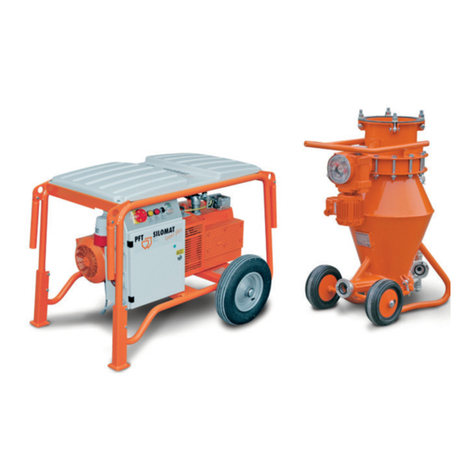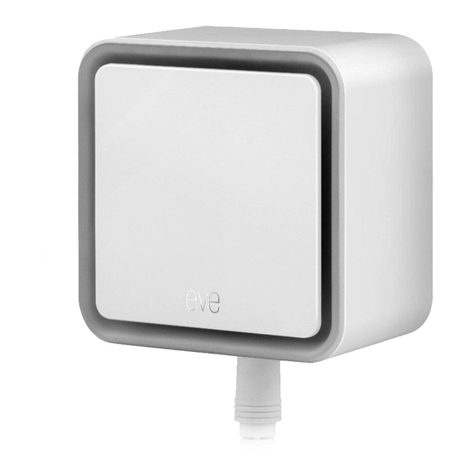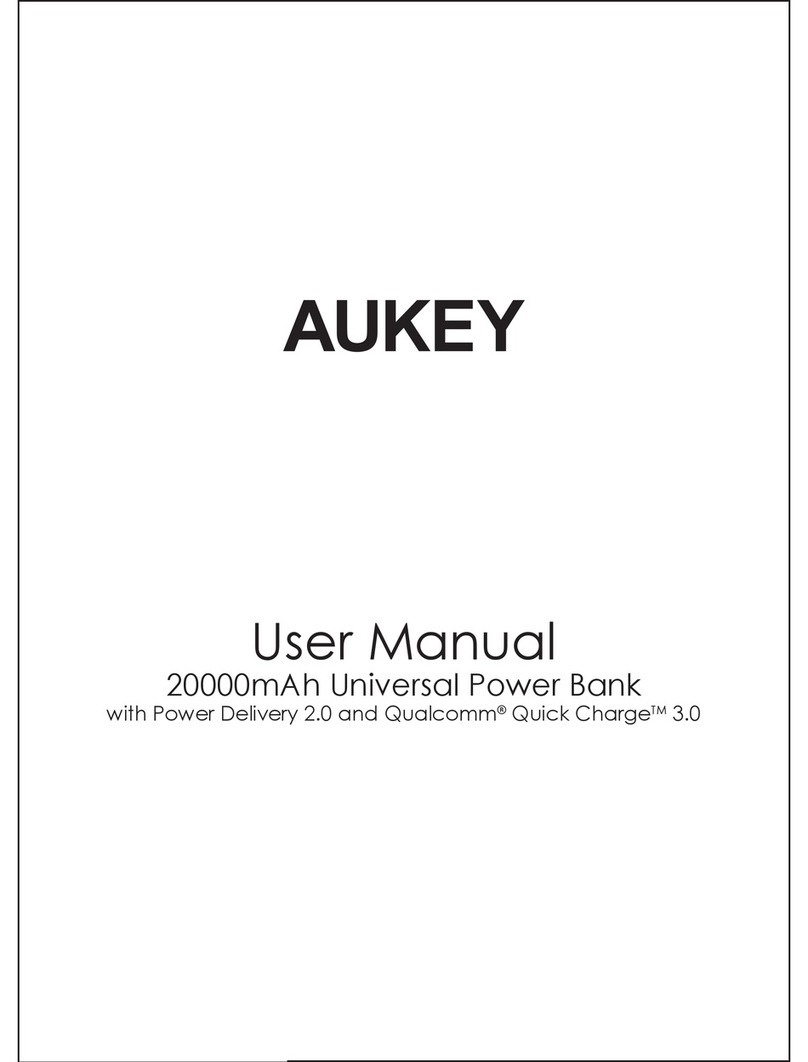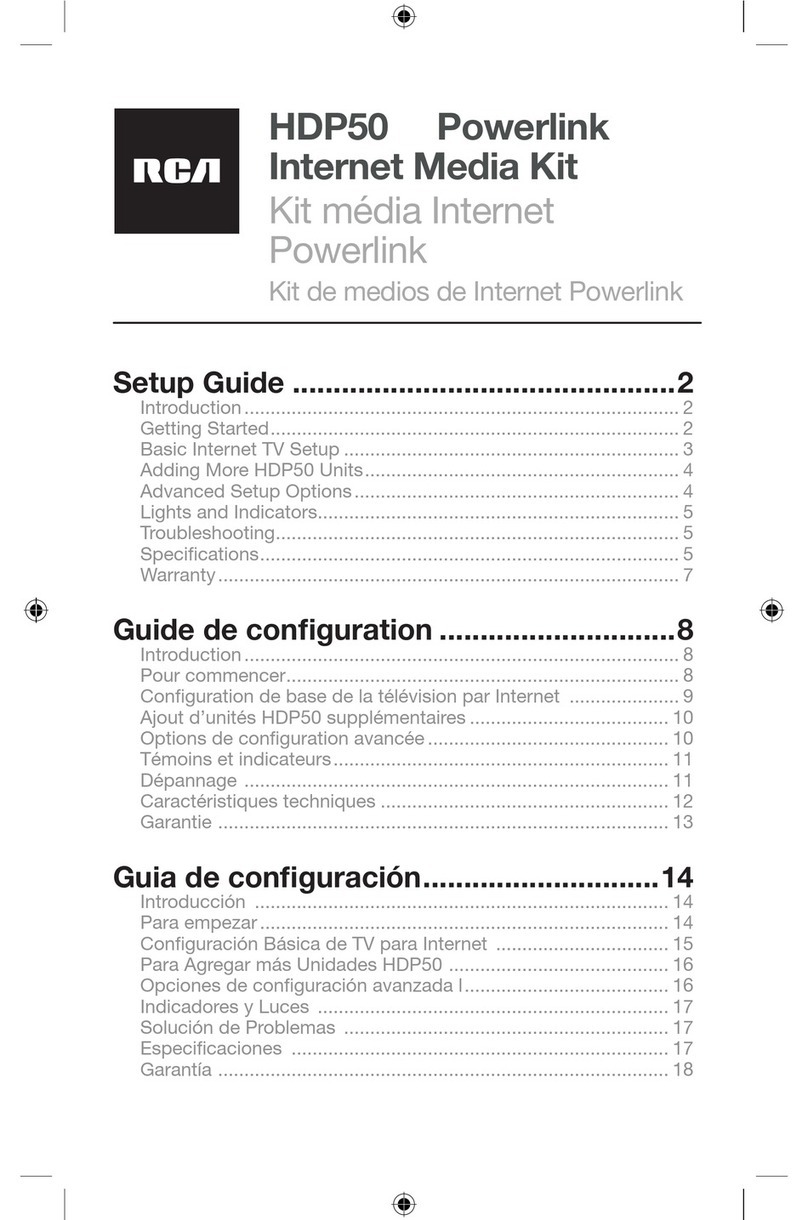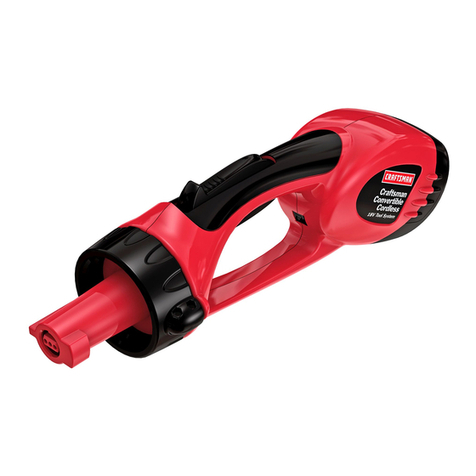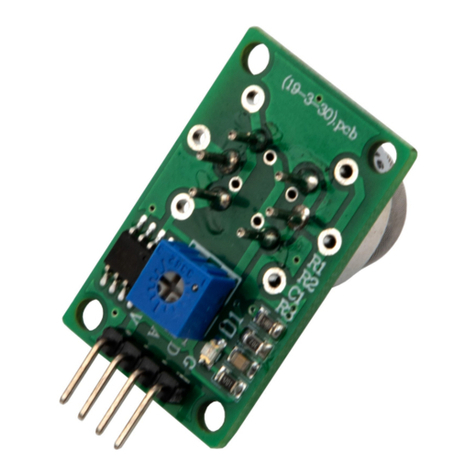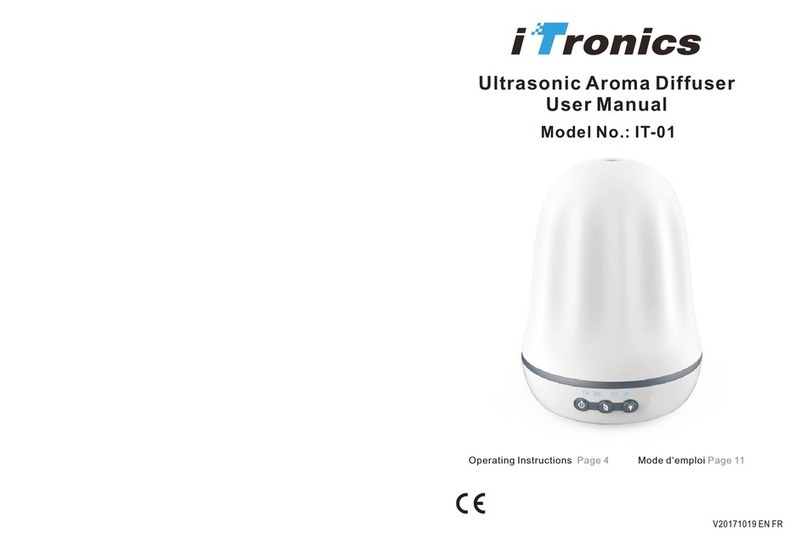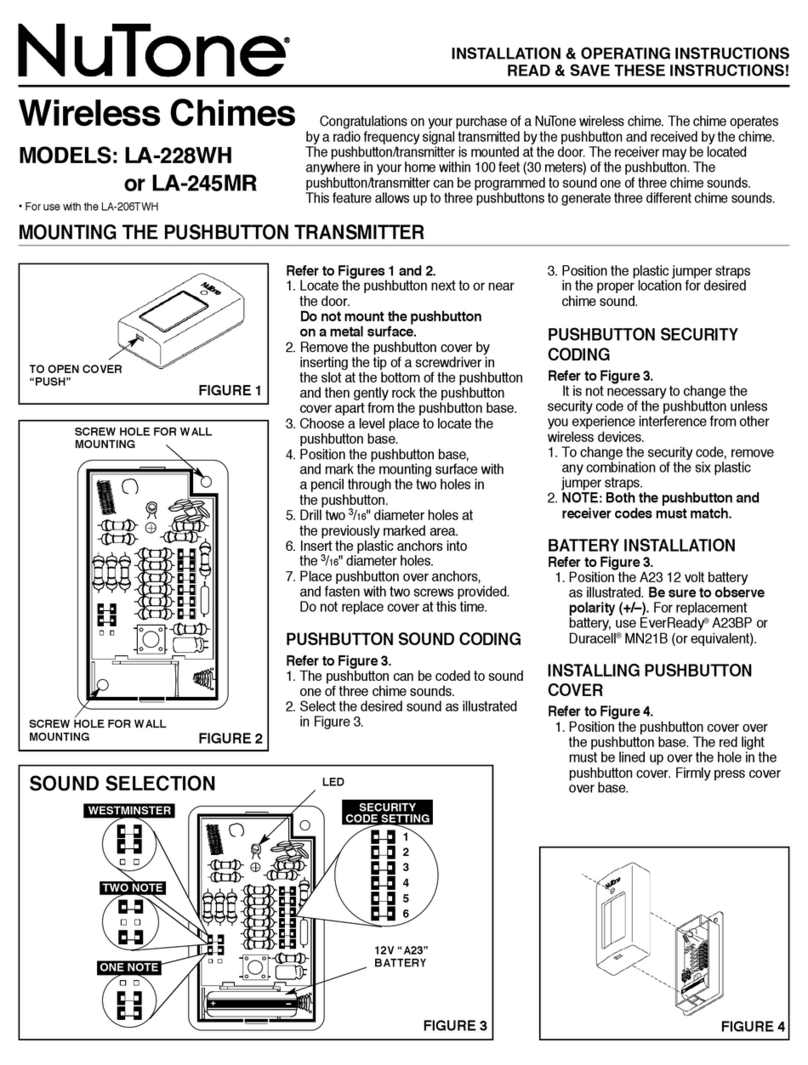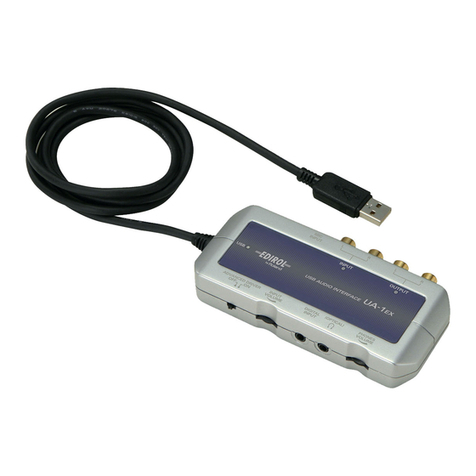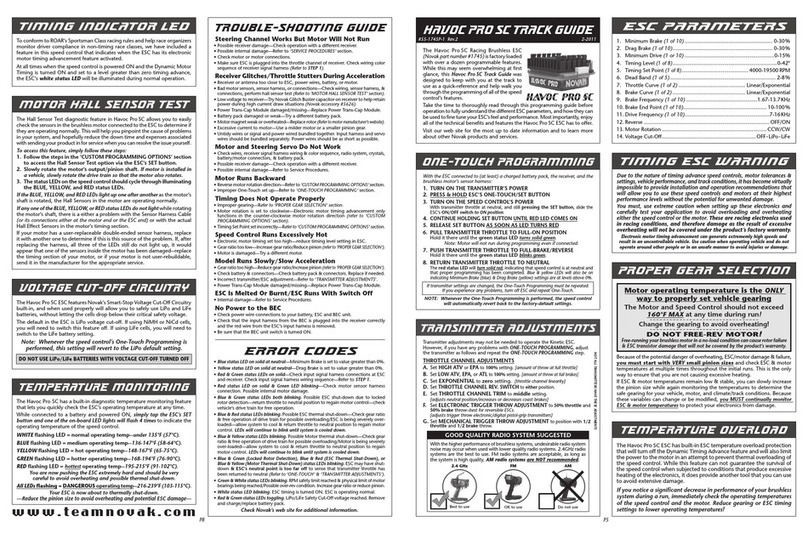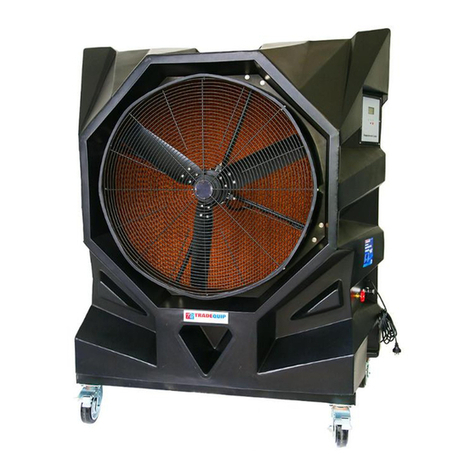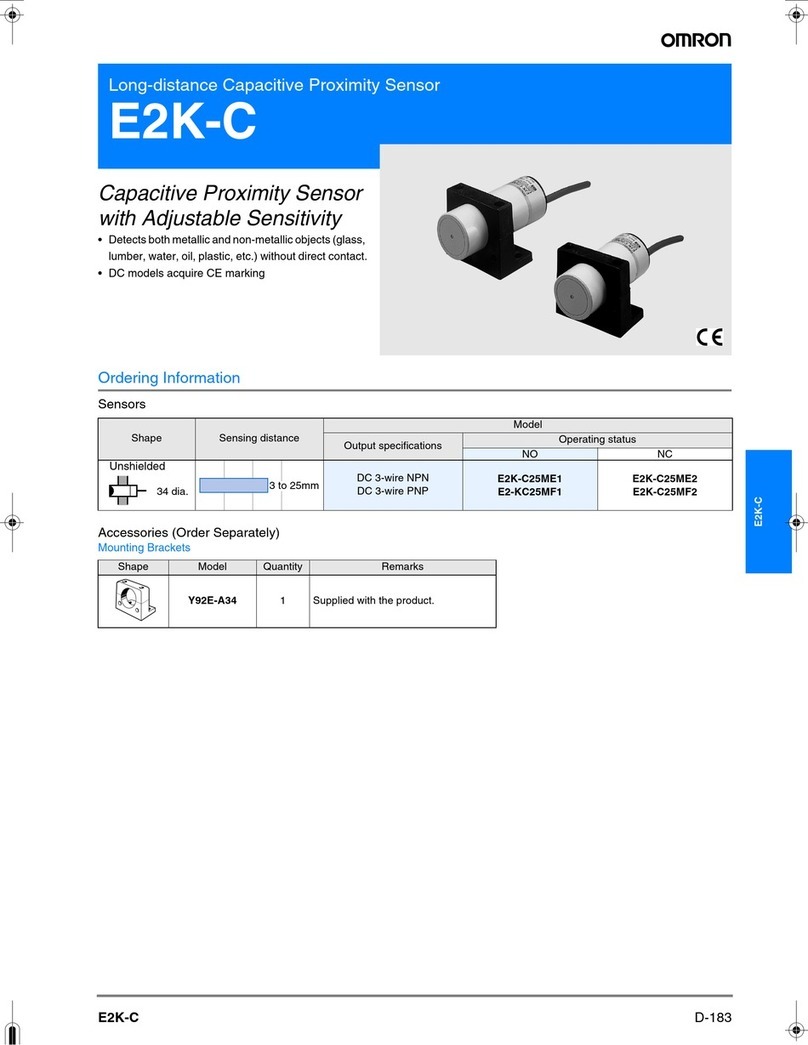Seeley Aira AL Series User manual

INSTALLATION AND OPERATION
AL SERIES EVAPORATIVE COOLER
OR MODELS
Original English Instructions
AMI044-A


AL SERIES INSTALL OPERATION MAINTENANCE MANUAL |1
SAFETY
1.0 Introduction 3
1.1 General Safety Information 3
1.1.1 Handling The Unit 3
1.1.2 Positioning The Cooler 3
1.1.3 Wiring Electrical 3
1.1.4 Drainage 3
1.1.5 Occupational Health And Safety 4
1.1.6 Water Supply 4
1.1.7 Commissioning, Recommissioning, Decommissioning 4
1.1.8 Operational Safety 4
1.1.9 Safety Points To Consider 4
1.1.10 Legionnaires Disease 5
GENERAL INFORMATION
2.1 Unit Overview 6
2.2 Equipment Receipt 6
2.3 Factory Unit Test 6
2.4 Model Designation 6
2.5 Technical Specication 7
2.5.1 Construction 7
2.5.2 Blower 7
2.5.3 Fan Motors 7
2.5.4 Pulleys 7
2.5.5 Electrical Control And Connection 7
2.5.6 Supply Water Specication 7
2.5.7 Relief Area Calculation 7
2.5.8 Drainage 8
INSTALLATION INFORMATION
3.0 Installation Information 9
3.1 Model Variations And Dimensions 10
3.1.1 Cooler Dimensions (AL18, AL25, AL30, AL36) 11
3.1.2 Drain Location Dimensions (AL18, AL25, AL30, AL36) 12
3.2 Installation
3.2.1 Location 13
3.2.2 Clearance Around Unit 14
3.2.3 Plant Room 14
3.2.4 Roof Stands 14
3.2.5 Weight And Location 15
3.2.6 Lifting 15
3.2.7 Positioning And Securing 16
3.2.8 Duct Connections 16
3.3 Electrical Connections
3.3.1 Electrical Supply 17
3.3.2 User Control Conguration Options 17
3.4 Water Connections
3.4.1 Water Supply 18
3.4.2 Water Setup 18
3.4.3 Drain 19
3.4.4 Automatic Drain Valve 19
3.4.5 Bleed O Valve 19
3.4.6 Cooling Pads 20
COMMISSIONING INFORMATION
4.1 Unit Details 21
4.2 General Installation Check 21
4.3 Electrical Checks
4.3.1 Electrical Installation Checks 21
4.3.2 Blower Box Checks 21
4.4 Water Checks
4.4.1 Incoming Water Supply Checks 23
4.4 2 Internal Water Checks 23
4.5 Start Up Procedure 23
4.6 Setting Pad Saturation 24
4.7 Commissioning Results 24
OPERATING INSTRUCTIONS
5.1 Startup Single Speed To Provide Cool Air 25
5.2 Startup Single Speed To Provide Ventilation 25
5.3 Shutdown Single Speed Providing Cool Air 25
5.4 Shutdown Single Speed Providing Ventilation 25
5.5 Startup Dual Speed To Provide Cool Air 25
5.6 Startup Dual Speed To Provide Ventilation 25
5.7 Shutdown Dual Speed Providing Cool Air 25
5.8 Shutdown Dual Speed Providing Ventilation 25
5.9 BMS Startup And Shutdown 25
5.10 Operational Flowchart 26
MAINTENANCE
6.0 Service And Maintenance 27
6.1 Cooler Maintenance
6.1.1 Cooler Maintenance 27
6.2 Major Service/Component Replacement Process
6.2.1 Electrical Components
6.2.1.1 Electrical Wiring 28
6.2.1.2 Isolator Fitted And Operational 28
6.2.1.3 Single Or 3 Phase Power Test 28
6.2.1.4 Fan And Motor 28
6.2.1.5 Belts 29
6.2.1.6 Pulleys 29
6.2.1.7 Fan Direction 29
6.2.2 Water Components
6.2.2.1 Water Controls 30
6.2.2.2 Water Connection Visual Inspection 30
6.2.2.3 Water Isolation Fitted 30
6.2.2.4 Water Supply Pressure 30
6.2.2.5 Float Valve Operation 30
6.2.2.6 Overow And Drainage 30
6.2.2.7 Automatic Drain Valve 30
6.2.2.8 Bleed Valve 30
6.2.2.9 Cooling Pads
6.2.3 Casing Components
6.2.3.1 Weatherproof Casing Condition 30
6.2.3.2 Water Carry Over 30
6.2.3.3 Duct Condition 30
6.2.3.4 General Installation 31
6.2.4.5 Access To Unit 31
6.2.4.6 Maintenance Records 31
6.3 Fault Finding Cooler 32
6.4 Replacement Parts List 32
APPENDIX
Appendix A: Electrical Information
Appendix A1 - 3 Phase Wiring Diagram 33
Appendix A2 - 3 Phase Cooler Auto Drain Wiring Diagram 34
Appendix B: Commissioning Report 35
Appendix C: Maintenance
Appendix C1: Maintenance Schedule 37
Appendix C2: Monthly Maintenance Check 38
Appendix C3: Maintenance Checklist 39
Appendix D: Warranty Information
D1 - How To Register Your Product Warranty 41
D2 - Warranty Terms And Information 42
Appendix E: Release Information 45
CONTENTS

2 |

AL SERIES INSTALL OPERATION MAINTENANCE MANUAL |3
1.0 INTRODUCTION
This Manual is for use with a Seeley International manufactured AIRA AL Evaporative Cooler OR Models. This manual
is updated without notication and it is the installer and customers responsibility to ensure the latest version is used.
This Manual is intended to assist in the Installation, Commissioning and Service of Seeley International manufactured
AIRA AL units and DOES NOT take precedence over any Australian Standards or legislation.
This book should be retained with the unit or made easily accessible to installation and maintenance personnel.
AIRA AL units are evaporative cooler appliances, capable of supplying cooled air and direct air ventilation. AL units are
produced in 4 dierent capacities to suit a wide variety of installation requirements.
1.1 GENERAL SAFETY INFORMATION
THIS EVAPORATIVE COOLER IS TO BE INSTALLED BY AN AUTHORISED PERSON ONLY
DO NOT Operate this appliance before reading the manual.
DO NOT Place articles on or against this appliance.
DO NOT Use or store ammable materials near this appliance.
DO NOT Operate this appliance with panels, covers or guards removed.
DO NOT Spray aerosols in the vicinity of this appliance while it is in operation.
DO NOT Remove markings and or labels from the unit.
DO NOT Remove warning labels from the unit.
DO NOT Use chlorine tablets
These AIRA AL Evaporative Cooler units must be installed in accordance with these instructions, local plumbing
regulations, municipal building codes, electrical wiring regulations, Australian Standards and any other relevant
statutory requirements.
Employers and Employees Responsibility
The installation and maintenance of evaporative
cooling units, particularly at height, has the potential
to create Occupational Health and Safety (OH&S)
issues for those involved. Installers are advised to
ensure they are familiar with relevant State and Federal
legislation, such as Acts, Regulations, approved
Codes of Practice and Australian Standards, which
oer practical guidance on these health and safety
issues. Compliance with these regulations will require
appropriate work practices, equipment, training and
qualication of workers. Seeley International provides
the following information as a guide to contractors and
employees to assist in minimising risk.
Risk Assessment
A risk assessment of all hazardous tasks is required under
legislation. A risk assessment is an essential element that
should be conducted before the commencement of work,
to identify and eliminate the risk of falls and other risks, or
to minimise these risks by implementing control measures.
This does not need to be a complicated process - it is a
matter of assessing the job to be done and considering
what actions are necessary so the person doing the job
does not injure themselves.
This should be considered in terms of:
• What are the chances of an incident occurring?
• What could the possible consequences be?
• What can be done to reduce, or better still, eliminate
the risk?
1.1.1 Handling the Unit
AL coolers are provided with lifting external points.
The cooler must remain in the upright position at all times.
1.1.2 Positioning the Cooler
The unit should be installed so that it is level. Allow 1200mm clearance around the unit. Air intake to the unit should not
be restricted in any manner. Approval should be sought by Seeley for any installation encroaching on these limits. No
modications shall be made to the unit. If the unit is being installed on a sloped roof, a roof stand shall be installed and
adequately secured before the AL unit is installed.
1.1.3 Wiring Electrical
Connections must be in accordance with all relevant Australian Standards and applicable State regulations and local
legislation.
1.1.4 Drainage
Drainage for the cooler section shall be done in accordance with relevant Australian Standards (AS3500) and statutory
requirements and local legislation.
SAFETY

4 |
1.1.5 Occupational Health and Safety
Only safe working practices shall be employed when working on the Al Coolers. The process of installing the units shall
take into consideration relevant OH&S requirements. There requirements pertain to all aspects of access, installation,
operation and maintenance. Persons installing water appliances shall be aware of their responsibilities and qualied
in accordance with local OH&S requirements. Precautions shall be taken to avoid any electrical hazards present in the
water installation.
1.1.6 Water Supply
Pipework supplying the unit shall be installed by an appropriately qualied person and be tted with the required
isolation valves. Pressure to the unit must be no greater than 1400 kPa. Potable water shall be used.
1.1.7 Commissioning, Recommissioning and Decommissioning
Every Al Evaporative Cooler shall be commissioned according to the instructions in Section 4 of this Manual prior to
use to ensure safe start and operation of the unit and shall include checks of safety and operating control.
Following maintenance work on any part of the unit, the aected part of the installation shall be re-commissioned by
checking to ensure safe start-up and operation.
After a maintenance shutdown, isolation of the unit or interruption to the water or electrical supply an appropriately
qualied person shall conduct start up checks to conrm safe operation.
When a unit is being decommissioned it shall be physically disconnected from the water supply, purged and sealed.
Where possible components should be recycled in accordance with government regulations.
1.1.8 Operational Safety
AIRA AL Evaporative Coolers must not be operated until the unit has been commissioned by a qualied person. The
unit should not be operated if any safeguards, panels or controls have been removed, damaged or bypassed.
If the unit is not operating as intended turn o the unit at the wall switch and then isolate the power and water supply.
The unit should remain isolated until a qualied service technician has inspected the unit and resolved any issues.
1.1.9 Safety Points to Consider
• What is the best and safest access to the roof and/or work areas?
• If a worker is alone, who knows they are there and if they get into diculty, how can they summon help? (Call
someone on the ground? Mobile phone? Etc.)
• Has the roof section or structure been assessed to ensure that it can withstand the load of the appliance and
workers.
• Does the worker have appropriate foot wear? (Flat sole jogger type is advisable.)
• Are all power cables / extension leads safe and appropriately rated?
• Are all ladders, tools and equipment suitable in good condition?
• Where ladders are to be used, is there a rm, stable base for them to stand on? Can they be tied or secured in
some way at the top? Is the top of the ladder clear of electricity supply cables?
• Is there a roof anchor to attach a harness and lanyard to? If so, instruction should be issued for the use of an
approved harness or only suitably trained people used.
• Are all tools and materials being used, prevented from slipping and falling onto a person at ground level? Is the
area below the work area suitably protected to prevent persons walking in this area?
• Does the work schedule take into account weather conditions, allowing for work to be suspended in high winds,
thunder storms/lightning or other types of weather giving wet, slippery surfaces?
• Is there an on-going safety check system of harnesses, ropes, ladders and access/lifting equipment and where
they exist on roofs, anchor points before the commencement of work?
• Is there a system which prevents employees from working on roofs if they are unwell or under the inuence of
drugs or alcohol?
• Are there any special conditions to consider i.e. excessive roof pitch, limited ground area, fragile roof, electrical
power lines?
• Is the person conducting the installation and maintenance appropriately qualied and familiar with local authority
and Australian Standards.
SAFETY

AL SERIES INSTALL OPERATION MAINTENANCE MANUAL |5
1.1.10 Legionnaires Disease
Evaporative air conditioners have not been implicated in any outbreak of Legionnaires disease, although Legionella
bacteria have been found in such systems. The water temperature in the evaporative air cooler section is normally at
about 18°C at which temperature the Legionella bacteria (if present) will remain dormant and cannot multiply.
The following maintenance schedule is required to be followed in order to comply with the New South Wales Public
Health Act 1991 section 46:-
a. Sumps are to be drained and cleaned at three monthly intervals or more frequently if necessary.
b. Wetted pads are to be drained and cleaned at three monthly intervals or more frequently if necessary.
c. Water strainers are to be cleaned at three monthly intervals or more frequently if necessary.
d. If any air lter is tted, it is to be cleaned or replaced when necessary.
SAFETY

6 |
2.1 UNIT OVERVIEW
ARIA AL units are Evaporative Coolers. The standard control system is a standalone wall switch or BMS to control the
fan and water pumps. Appendix A provides wiring diagrams.
When the pumps are turned on water is drawn into the unit and dispersed through the evaporative cooler pads. The fan
is then turned on drawing air across the damp pads lowering the temperature of the air before being fed into the duct
work.
Coolers are supplied with one speed VSD compatible motors or 2 speed motors.
GENERAL INFORMATION
AMI051-B
Figure 2: Discharge Options
2.2 EQUIPMENT RECEIPT
Inspect the unit for any damage caused in transit. Any such damage must be immediately reported to the shipper of the
goods.
The unit has been factory tested to check for correct operation of all components. If any part is obviously missing or
damaged, notify the supplier immediately.
2.3 FACTORY UNIT TEST
All AIRA coolers are given a factory unit test which covers the function test and checks of the safety system including;
• Blower/fan operation
• Electrical wiring
2.4 MODEL DESIGNATION
AIRA AL Coolers come in 4 sizes (AL18, AL25, AL30 and AL36) oering a range of airows. Each unit has a range of
pulley kits available which can be purchased to meet the pressure and ow requirements. Units can be specied to
have top, side or bottom discharge.
Figure 1: External (left) and Internal (right) components
AMI098-A
AMI081-A
INCOMING
WATER
SUPPLY
WATER CONTROL
PUMP
BLEED VALVE FLOAT
AUTO
DRAIN FLOAT VALVE
BOTTOM DISCHARGE SIDE DISCHARGE TOP DISCHARGE

AL SERIES INSTALL OPERATION MAINTENANCE MANUAL |7
2.5 TECHNICAL SPECIFICATION
2.5.1 Construction
• The frame is a galvanised steel body and external cabinets are marine grade aluminium.
• Units have Black MagicTM Mini-Cell Chillcel®cooling pads.
2.5.2 Blower
• The standard blower is forward curved and constructed from steel. Units not installed in ductwork are typically
optioned with an axial fan due to the low pressure drop.
• Blower housings are powder coated steel as standard.
2.5.3 Fan Motors
• Fan motors are mounted externally to the blower and connect via a set of pulleys.
• All units are available at order with 2 dierent motor power capacity to meet ow and pressure requirements. Units
may be tted with a larger motor at additional cost. Contact Seeley international for further advice.
• Axial fans are specied for the F conguration and designed to be installed indoors generally as an air curtain.
2.5.4 Pulleys
• Upon order the customer will be given the options of one of three pulley kits to meet their ow and pressure
requirements.
• Variations in external pressure drop outside of the standard product range require pulley and belt combinations to
be supplied by the customer.
• All pulleys are of steel construction with taper lock mounting.
2.5.5 Electrical Control and Connection
• All units have an electrical starter box housed inside the unit.
• Refer to Appendix A for wiring diagrams.
• Units may be controlled by Wall Switch or BMS.
• Units will require single or 3 phase power depending on required motor size.
2.5.6 Supply Water Specication
Water consumption rates vary with weather conditions but the following can be used as a guide. The evaporative cooler
can evaporate around 2.5L of water per hour for every 100L/s of supply air. So a large cooler providing 14,000L/s of
air could evaporate 2.5 x 140 = 350L of water per hour of operation. The water bleed o rate must be added to this in
order to calculate the total operating water ow rate.
2.5.7 Relief Area Calculation
Evaporative air coolers always run on 100 % fresh outside air. Always ensure adequate relief is available via open
doors and/or windows. Allow approximately 0.4m² per 1000L/s of supply air. If 0.5mm y wire screens are tted to the
relief area, allow 0.8m² per 1000L/s for this area. Contact manufacturer if other y wire thicknesses are installed.
Example:
AL30 – 7.5kW Cooler with 200Pa pressure drop
Air delivery will be approximately 11,890 L/s (refer spec sheet)
If no y screens are tted to relief openings:
0.4 m2x (11890 L/s / 1000 L/s) = 4.8m2relief area required
If y screens are tted to 70% of the relief openings:
[(0.8 m2x 70%) + (0.4 m2x 30%)] (11890 L/s / 1000 L/s) = 8.1 m2relief area required (minimum)
Select relief openings to provide the best pattern of cool air ow throughout the building. Note that relief openings
may be ineective if exposed to high winds. If air exhaust volume is a problem, mechanical exhaust ventilation will be
required for as much as 80% of the air delivery of the cooler.
Coolers must not discharge into a closed space but must always be able to relieve from a building.
If Supply air ducts are tted with adjustable outlet grill blades, the blades should be adjusted to give the best cool air
distribution in the area served by the outlet. Do not close blades too far or air whistle may occur.
To ensure long life and ecient operation it is essential that the cooler receive an annual service. In extreme
environments (e.g. hot dusty areas) more frequent service may be required. Check with the unit installer.
During normal operation of the cooler it is important that the water bleed-o is operating and is not shut o or blocked.
This bleed-o will prevent an accumulation of salts and solids in the unit.
GENERAL INFORMATION

8 |
2.5.8 Drainage
All AL coolers require adequate drainage to remove water from the unit. It is the installers responsibility to ensure that
the drain is adequately sized to accommodate the unit. The local drains shall be sucient to remove the excess water
required to clean out the unit as required.
GENERAL INFORMATION

AL SERIES INSTALL OPERATION MAINTENANCE MANUAL |9
3.0 INSTALLATION INFORMATION
The supplied units are to be installed in accordance to this manual, relevant local standards, acts and regulations.
Before installation it is the customers responsibility to ensure that the water and electrical supply required by the
unit is available and that the building structure is sucient to support the load of the operational unit and service and
installation personal.
Isolation of the water and electrical supplies to the units shall be accessible and identiable at all times.
INSTALLATION INFORMATION

10 |
AL SERIES COOLERS
ISOMETRIC (AL18, AL25, AL30)
3.1 MODEL VARIATIONS AND DIMENSIONS
INSTALLATION INFORMATION
TOP (AL18, AL25, AL30)
Dimensions are in mm.
B
A
113 113
110.8110.8
X
Y
A
C
D H
GG
E
A
C
B
C
113 113
B
I
J
B
A
113
113
110.8110.8
X
Y
A
C
D H
GG
E
A
C
B
C
113 113
B
I
J
REAR (AL18, AL25, AL30) SIDE (AL18, AL25, AL30)
BOTTOM (AL18, AL25)
AMI133-A ISO
B
A
113 113
110.8110.8
X
Y
A
C
D H
GG
E
A
C
B
C
113 113
B
I
J
B
A
113 113
110.8110.8
X
Y
A
C
D H
GG
E
A
C
B
C
113 113
B
I
J
B
A
113 113
110.8110.8
X
Y
A
C
D H
GG
E
A
C
B
C
113 113
B
I
J
FRONT (AL18, AL25, AL30)
B
A
113 113
110.8110.8
X
Y
A
C
D H
GG
E
A
C
B
C
113 113
B
I
J
AMI133-A TOP
AMI133-A REAR AMI133-A SIDE
AMI133-A FRONT AMI133-A BOTTOM
113
113 B
A
A
C
B
J
I
113
110.8110.8
Y
X
HD
C
A
EG
G
BOTTOM (AL30 DOWN DISCHARGE)
E
G
G
F
D
AMI143-A BOTTOM
G
FD
D
F
E
G G
AMI144-A BOTTOM
BOTTOM (AL30 TOP DISCHARGE)
GE
G GE
F D
113

AL SERIES INSTALL OPERATION MAINTENANCE MANUAL |11
INSTALLATION INFORMATION
DIM AL18 AL25 AL30 AL36
A990 1550 1890 2230
B990 1550 1550 2240
C1250 1570 1920 2135
D500 795 920 1090
E545 795 920 1090
F135 195 195 200
G222 377 483 570
H270 160 200 395
I440 440 440 440
J70 70 70 70
3.1.1 COOLER DIMENSIONS (AL18, AL25, AL30, AL36)
A
C
GG
E
HD
B
A
C
I
J
A
B
z
Y
B
C
A
C
GG
E
HD
B
A
C
I
J
A
B
z
Y
B
C
A
C
GG
E
HD
B
A
C
I
J
A
B
z
Y
B
C
A
C
GG
E
HD
B
A
C
I
J
A
B
z
Y
B
C
Dimensions are in mm.
A
C
GG
E
HD
B
A
C
I
J
A
B
z
Y
B
C
AL SERIES COOLERS
ISOMETRIC (AL36) TOP (AL36)
REAR (AL36) SIDE (AL36)
BOTTOM (AL36)
AMI145-A ISO
FRONT (AL36)
AMI145-A TOP
AMI145-A SIDEAMI145-A REAR
AMI145-A FRONT
AMI145-A BOTTOM
A
B
C
J
Y
Z
A
C
GG
E
HD
B
A
C
I
J
A
B
z
Y
B
C
B
A
C
I
G E G
C
D H
A
Table 1: AL Series Cooler Dimensions

12 |
INSTALLATION INFORMATION
Model AL18 AL25 AL30 AL36
X150 200 240 N/A
Y500 650 650 650
ZN/A N/A N/A 315
3.1.2 DRAIN LOCATION DIMENSIONS (AL18, AL25, AL30, AL36)
AMI101-A
Figure 5: Drain Location
YZX
Table 2: Drain Location Dimensions (mm)

AL SERIES INSTALL OPERATION MAINTENANCE MANUAL |13
3.2 INSTALLATION
The following recommendations are not intended to supplant or take precedence over relevant ocial regulations. AIRA
AL Evaporative Cooler units are designed essentially as a roof top or external ground mount unit.
3.2.1 Location
This equipment is not designed for long and complex air distribution ductwork and as such the unit should be located
as close as practicable to the points of air distribution. Depending on large volumes of 100% fresh air, care must
be taken to locate the unit clear of kitchen exhausts, heavy vehicle trac, industrial fume discharge etc. that may
allow odour or fume laden air to be drawn into the unit. The prime requisites for the correct location of a unit is an
unrestricted supply of clean fresh air.
When selecting a location for the AL Evaporative Cooler unit the following shall be considered.
1. Will the unit be suitably protected from the eects of corrosion and/or dust laden environments and any likelihood
of physical damage?
2. Can qualied personal perform functional adjustments and maintenance on the unit?
3. Does the chosen location prevent a hazard to the building or structure or to the contents of the building?
4. How to minimise the risks associated with storage, use or release of hazardous or ammable substances in the
vicinity of the unit?
5. How to minimise risk of harm to persons?
6. Will the noise of the unit operating aect persons nearby? Units should be located so that quiet areas such as
bedrooms, living rooms, meetings rooms etc. are not aected for both the premises that the unit is being installed
and adjoining properties.
7. A structural engineer is to be engaged to prove that the supporting structure is suitable for a fully laden unit.
8. Ensure any skylights within 3m of the units have adequate fall protection installed.
INSTALLATION INFORMATION

14 |
3.2.2 Clearance Around Unit
1200mm is the recommended clearance around all sides for service access.
INSTALLATION INFORMATION
3.2.3 Plant Room
It is not recommended to install an AL Evaporative Cooler in an enclosed plant room. Doing so may introduce negative
pressure into the plant room and allow for harmful gases and fumes to be pulled into the building creating a risk to the
building occupants. If a cooler is placed in a plant room a suitably qualied engineer must be consulted to ensure that
enough clean airow is entering the plant room.
If the unit is installed in an external plant room a suitably qualied engineer should be engaged to ensure that other
plant that may generate harmful gases and fumes are located at a distance such that the gases and fumes will not be
drawn into the building.
3.2.4 Roof Stands
If a roof stand was supplied with the unit it is to be installed in accordance with manual AM011. If the customer chooses
to use a 3rd party support structure they must be adequately and professionally designed by a structural engineer to
support the operating weight of the unit.
Roof stands shall be installed so that the unit sits level. Figure 7: Typical Roof Stand depicts a typical roof stand used
across the AIRA range. Refer to AM011 for Roof stand installation, commissioning, and maintenance.
Figure 6: Service Clearance around Unit
AMI102-A
AMI103-A
Figure 7: Typical Roof Stand
1200MM
1200MM
1200MM
1200MM

AL SERIES INSTALL OPERATION MAINTENANCE MANUAL |15
3.2.5 Weight and Location
For roof mounting, the building’s roof must be adequately designed to support the unit weight and any service
personnel. If in doubt a suitably qualied Civil or Structural Engineer should be engaged to conduct an assessment.
The below gures and tables list the corner weights of the units with and without blower.
MODEL A B C D
AL18 37kg 28kg 27kg 36k
AL25 78kg 71kg 90kg 67kg
AL30 115kg 63kg 84kg 115kg
AL36 140kg 196.5kg 212kg 93kg
Figure 9: Lifting Example
AMI147-A
INSTALLATION INFORMATION
Table 3: Unit Corner Weights
Figure 8: Unit Corner Weights
3.2.6 Lifting
Units are to be lifted by the points specied and designed to lift only the specic units’ dry weight. These lifting points
are suitable for either Crane or Helicopter lift with suitable spreader bars. The unit cabinet is lightweight aluminium and
at no point should the lifting slings or spreader bar contact the cabinet, failure to comply will permanently damage the
case.
Lifting point securing bolts and lifting eyes must be inspected for prior to lifting to ensure all bolts are installed, of
correct tensile strength and are correctly tensioned. If any damage is observed, lifting points and/or eyes should be
replaced.
Below is a suggested lifting arrangement. Noting that the centre of gravity should be assessed for each unit prior to
lifting. By suitably qualied crane operator, rigger and dogmen. Certication of the lifting lug assembly may be obtained
by contacting Seeley International.
AMI104-A
D B
CA

16 |
INSTALLATION INFORMATION
3.2.7 Positioning and Securing
Cabinet units are supplied with under cabinet skids. Units are designed to be supported along the length of the skids.
Holes may be drilled into the skids to secure the unit in place. Lifting points at either end of the units are NOT to be
used for anything other than lifting the unit into place and may be removed once installation has occurred.
It is the responsibility of the installer to ensure that any platform used to support the unit is suitably designed. A suitably
qualied Civil or Structural Engineer must be engaged to conduct an assessment.
Figure 10: Positioning the unit
3.2.8 Duct Connections
It is the installers responsibility to adequately secure the ductwork to the unit. Typical installations use duct mate
screwed to the face of the unit over the blower opening.
Refer to the Model Variants and Dimensions section of the document for specic unit details. Units are available in top,
side or down discharge.
Figure 11: Duct Connections
AMI048-B
Self Levelling
Feet
Compliant Support Bearer
to suit Roof Structure
Check Stand is Level
in both Directions

AL SERIES INSTALL OPERATION MAINTENANCE MANUAL |17
INSTALLATION INFORMATION
3.3 ELECTRICAL CONNECTIONS
3.3.1 Electrical Supply
All electrical connections are to be as per AS3000. All electrical work shall be performed by a registered electrical
contractor. Appendix A: Electrical Information, provides a comprehensive electrical connection guide including wiring
congurations for dierent control setups and wiring diagram package and should be used in conjunction with this
manual.
• Electrical circuit breakers must be a minimum of a “ D curve” motor start circuit breaker.
• Electrical circuit breakers must be sized according to the total load requirements.
All AIRA AL Evaporative Coolers are supplied with an electrical isolation switch which is to be installed by a qualied
tradesperson in a location compliant with Austtralian Standards and Regulations. A hole saw will be required to create
a cut out to install a gland in the desired power entry location. The hole shall be cut in a location such that the cable will
not be within the water and can be adequately secured to the inside of the unit.
3.3.2 User Control Conguration Options
There are 2 primary control options for AIRA Al Evaporative Cooler units, Wall switch and BMS. Units are specied
with either a wall switch or capability to be wired for BMS interface. The wall switch is the standard option with BMS
available upon request. The wall switch should be installed in a secure location that is easily accessible for authorised
personnel to control the operation of the unit. It is the customers responsibility to provide wiring back to the unit.
AMI056-B
Figure 12: Wall Switch
ON/OFF PROVIDES POWER TO THE UNIT
FAN HIGH/LOW CHANGES FAN SPEED IF UNIT HAS A 2 SPEED MOTOR
COOL TURNS ON WATER PUMP INSIDE UNIT

18 |
3.4 WATER CONNECTIONS
3.4.1 Water Supply
The supply pipe should be suitably sized to meet the specied ow and pressure. A ¼ turn ball isolating valve must be
installed on the supply pipe near the unit for ease of maintenance. Do not use duo or non-return (check) valves of any
kind including stop taps with jumper washers.
NOTE: Non-return type valves can have an eect on the operation of the water solenoid valves. They may lock up and
damage can be caused.
1. Fit water supply isolation close to the unit to assist in routine servicing.
2. Before connecting the supply pipe, ush it clear of any swarf or debris that may cause the oat valve to stick and
leak.
NOTE: In areas where water pipes freeze, provisions will be needed to drain the water piping to prevent damage.
INSTALLATION INFORMATION
3.4.2 Water Setup
AL Evaporative Cooler units come with internal water components pre-plumbed. Once the unit is in position the water
supply to the unit and drainage from the unit will need to connected.
Figure 13: Incoming Water Supply Location
Figure 14: Drain Conguration
AMI080-A
INCOMING WATER
SUPPLY
AMI081-A
INCOMING
WATER
SUPPLY
WATER CONTROL
PUMP
BLEED VALVE FLOAT
AUTO
DRAIN FLOAT VALVE
This manual suits for next models
4
Table of contents
Other Seeley Accessories manuals

Seeley
Seeley LCQ User manual
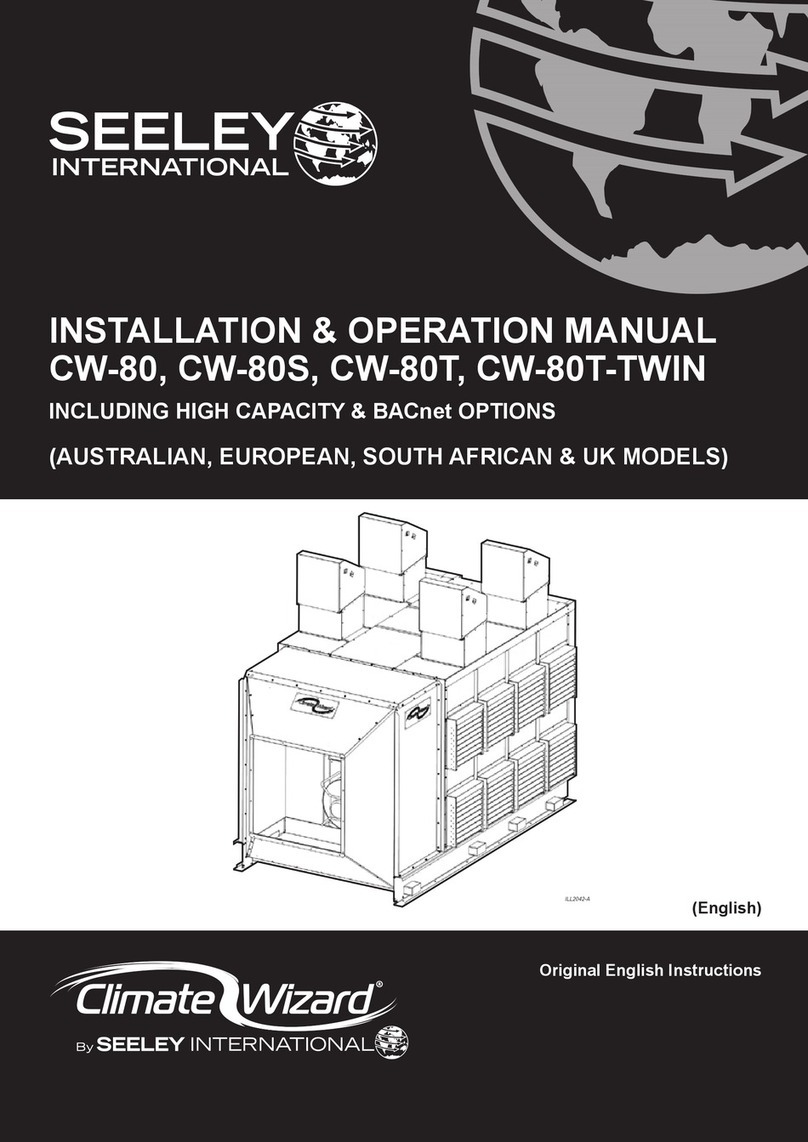
Seeley
Seeley Climate Wizard CW-80 User manual
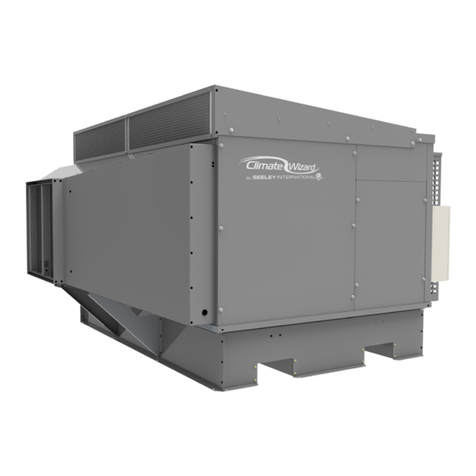
Seeley
Seeley Climate Wizard CW-H10 User manual

Seeley
Seeley Convair CTA250 User manual

Seeley
Seeley Climate Wizard CW-P15 Owner's manual
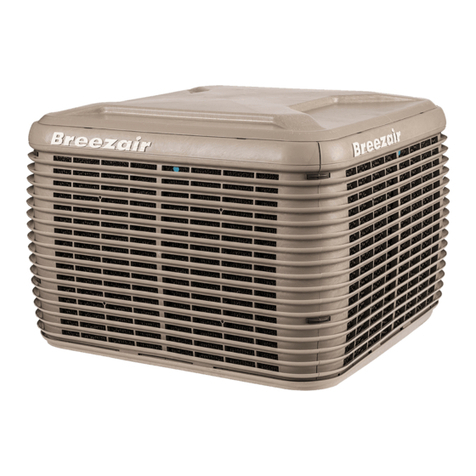
Seeley
Seeley Breezair EXS User manual

Seeley
Seeley Breezair EXT User manual
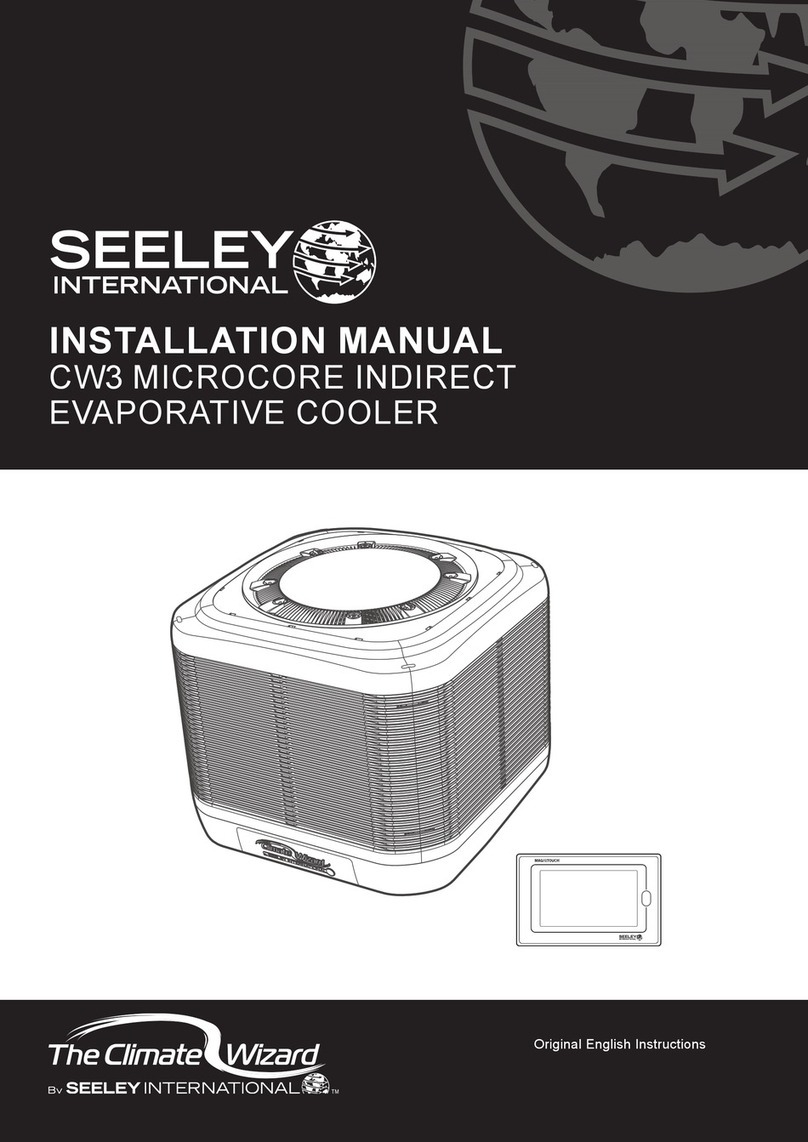
Seeley
Seeley CW3 User manual
Popular Accessories manuals by other brands

XD XCLUSIVE
XD XCLUSIVE Tela P324.53 Series manual
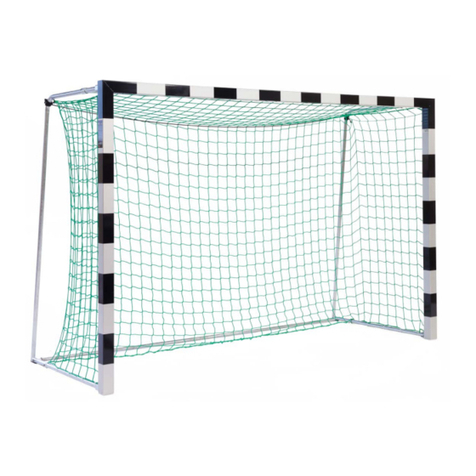
Sport-thieme
Sport-thieme 11 201 0902 Instruction of Assembly

Axnes
Axnes PNG CP50 Operation manual
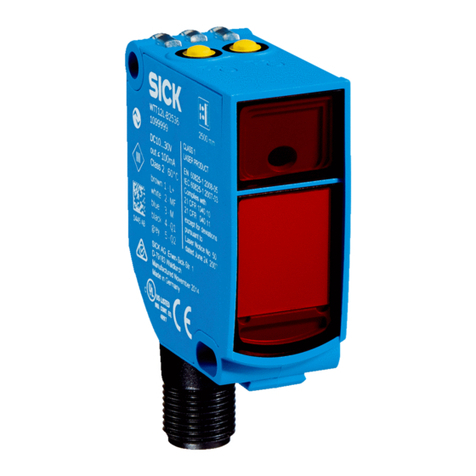
SICK
SICK PowerProx WTT12L-A Series operating instructions

Miller Electric
Miller Electric Coolmate Coolmate 4 Specifications

Velleman
Velleman VMA330 user manual
